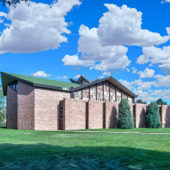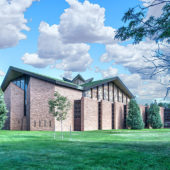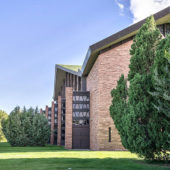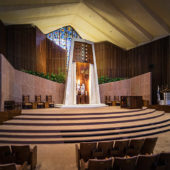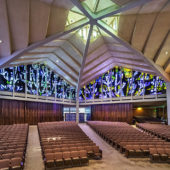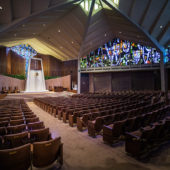The oldest Jewish congregation in the state of Colorado and the largest between Kansas City and the West Coast.
Founded in 1874, Temple Emanuel is the oldest Jewish congregation in the state of Colorado. It is the largest Jewish congregation between Kansas City and the West Coast. The congregation’s origin was the 1866 establishment of a burial society. Two years before Colorado became a state, the congregation was officially incorporated. The membership grew quickly and only a year later its first synagogue was dedicated followed by the hiring of its first rabbi after another year.
Due to continual growth of the congregation the original synagogue was soon too small. It was replaced with a second synagogue in 1882. As Denver grew its Jewish population moved making the synagogue’s location less convenient. A third synagogue was dedicated in 1899 and that building was doubled in size twenty five years later. By 1953 that synagogue proved to be too small. The noted architect Percival Goodman was engaged to design the present building which was completed in two phases. The school and social areas were completed in 1957 while the impressive sanctuary was dedicated in 1960. In 1987 the building was once again enlarged.
About the architect:
: Percival Goodman (January 13, 1904 – October 11, 1989) was an American urban theorist and architect who designed more than 50 synagogues between 1948 and 1983. He has been called the leading theorist of modern synagogue design, and the most prolific architect in Jewish history.
Percival Goodman was born in New York City to wealthy parents who were artists. His brother was the noted writer and sociologist Paul Goodman. In 1925, Percival Goodman received the Society of Beaux-Arts Architects Paris Prize which sent him to the Ecole des Beaux-Arts in Paris, France for architectural training.
Goodman called himself “an agnostic who was converted by Hitler”, and after World War II he became more interested in Jewish architecture. At a 1947 conference of the Reform Jewish movement, the Union of American Hebrew Congregations, Goodman advocated the use of modern architecture for new Jewish buildings, rather than following the models of older churches and synagogues. He quickly began to receive commissions.

